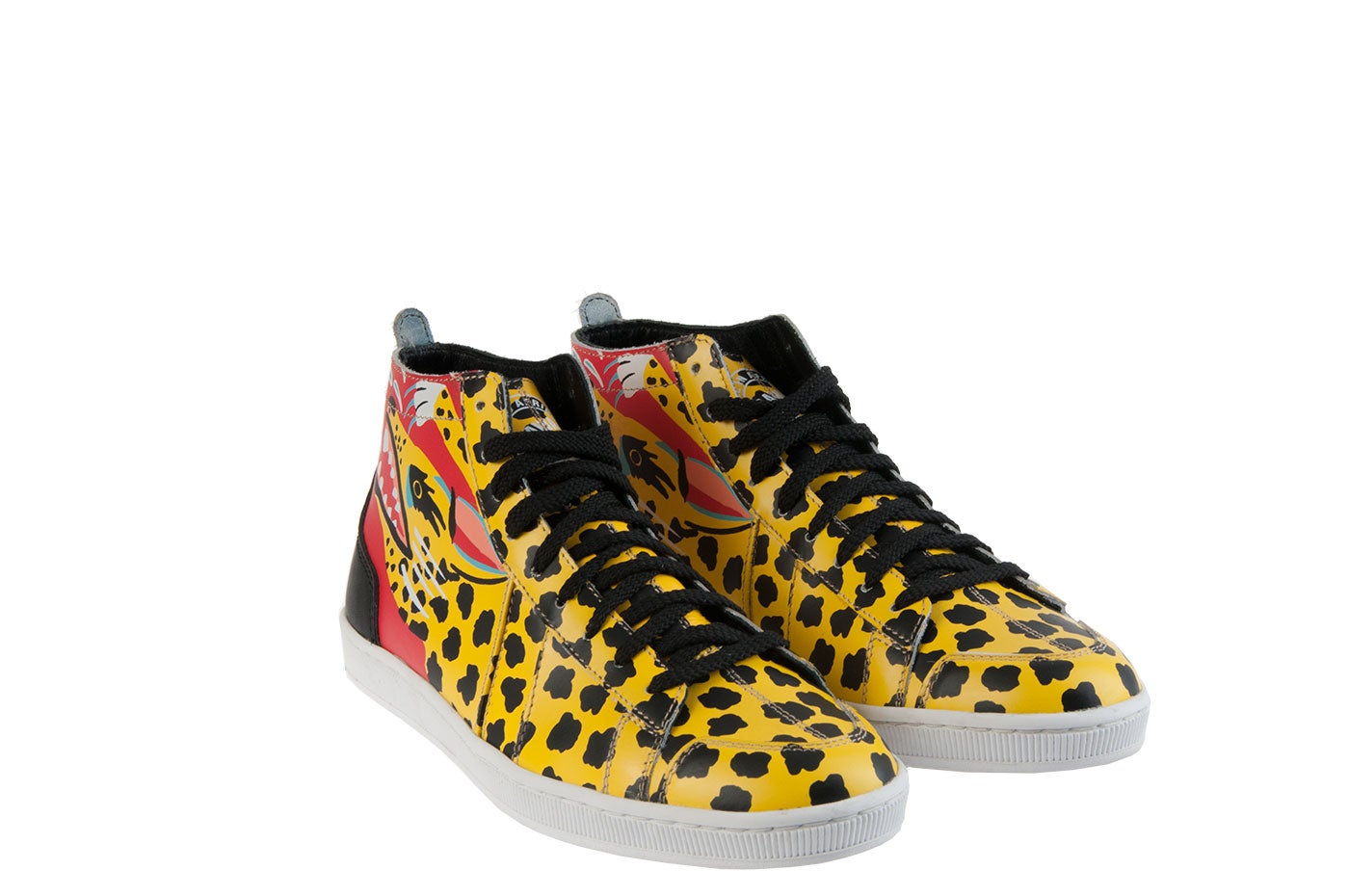
Shoe designer Mehdi Slimani is on a mission to get his SAWA shoes on all the stylish, and socially conscious, people of the world. The Algeria-born Paris resident has made it a point to manufacture his super stylish kicks in Ethiopia. “Behind our ‘Made in Africa’ statement, there are factory, workers, their families, a school, a hospital,” he says. Slimani spoke with ESSENCE.com about the inspiration behind SAWA, and why the brand is among the new faces of African fashion. (Sidenote: Most American shoe lovers may remember the SAWA collaboration with J.Crew.)
What does SAWA stand for?
SAWA stands for a new face of African fashion. Sawa and many other African brands (Bantuwax, LemLem, Inaden Design, Laduma) are moving the lines from Africa to J.Crew in the US, Galeries Lafayette in Paris or Tomorrowland in Japan. We are elbowing our way through the international competition in Paris, Milan, London, etc.
Why Ethiopia? What made you choose this particular country as home base for SAWA?
SAWA started in Cameroon, but after two years and big financial loses, we had to leave. At that time, we were importing materials from Egypt and Tunisia and Cameronese customs never lost an opportunity to ask us for under table money. Then there was a revolution in Tunisia and Egypt so our suppliers closed their doors. We decided to change our business model, moving to Ethiopia. From the day we set up in Ethiopia, the situation was perfect. Ethiopia is a great country for people ready to invest time on it.
Why is important that your shoes be made in Africa?
Behind our “Made in Africa” statement, there is a factory, workers, their families, a school, a hospital, etc. In other words I really believe the Industrial Revolution as a unique Revolution, which will pull Africa forward. Historically, the industrial Revolution triggered the development in the UK then in the US, Europe and Asia. Why should not it be the solution in Africa? Why should we need Bono and Geldof instead?
What is your mission with SAWA shoes?
Today I would say that SAWA mission is to take the floor. I’m fed up with the people thinking they are going to save Africa with their marketing charity actions. On Monday, Africa is HIV, on Tuesday Africa is Ebola, on Wednesday Africa is tribal war, on Thursday Africa is barefoot…there is always a good reason to make a song. I’m just saying, “Give a dog a bad name and hang him.” What’s killing me is that there’s always a counter party to this charity: “Buy from me and I will give a pen.” I am an African, living in Africa most of my time, making business in African, having a social life in Africa and I can tell you that all this is useless to the continent. I’m among the people who are occupying the field on an everyday basis and these people are stealing our voices. It is important that SAWA takes the voice back; takes the floor back.
Who do you see as a SAWA shoe lover? Any celebrities?
I have always been a great fan of PUBLIC ENEMY. Back in the days, the Los Angeles Raiders Starter jacket became a kind of official PUBLIC ENEMY uniform. One day when PUBLIC ENEMY came to Paris for the first time, Chuck D gave an interview and he explained that he was wearing this jacket because the LA Raiders hired the first African-American coach. From that day I understood that you can wear a piece of cloth for its style, for its comfort or for its message. I really like the concept of activist fashion PUBLIC ENEMY was bringing forward. When PUBLIC ENEMY accepted to make a signature shoe with us, I could not have dreamt of something better! Chuck D and PUBLIC ENEMY really helped us to move forward…it was such a great collaboration.
Tell us more about your latest collaboration with Shine Shine.
Shine Shine is a South African home decor brand founded by Tracy Rushmere. Tracy has developed a great artistic and visual universe inspired by the commemorative African textile printing for political campaigns, Independence Day anniversary, etc. We used one of her iconic design that we printed on our leather. Our Shine Shine shoe reveals a beautiful Afro pin-up called Rose Mary… it was our first African collaboration.
What are some of things that influence the aesthetic?
I am not the kind of person that’s going to say our collection is inspired by the early morning dew or the unforgettable smell that invaded me when I was walking behind this beautiful girl I met in the streets of New Delhi. Our aesthetic inspirations are deeply rooted in the reality. Seriously, we tried to design for industry…I mean we had to adapt our design to our industrial potential. Today we are not equipped to make crazy and complicated design, which was something helpful at the end of the day because the best design are the simpler ones.
